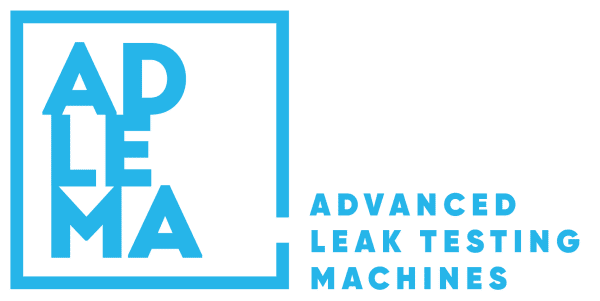Understanding the Leak Testing Data
There is no product without leakage. However, leak tests are among the important non-destructive testing methods used in the manufacturing industry. The parameter that needs to be decided at this point is what is considered leaky and what is not. In this blog post, we will focus on leak testing data, leakage, understanding and approach.
Manufacturing with different dimensional tolerances is quite similar to leak tests. It is sufficient to measure many parts produced by machining with calipers. If we measure the same part with a microscope, we will produce an unnecessary number of products.
In leak tests, there are no length tolerances such as mm, nm. The parameter we generally use in these tests is the leakage rate. Leaks above the leakage rate to be determined in pa/s, ml/s or scc/m parameters show that the product is faulty. To determine these parameters correctly, it is important to understand the leak testing data correctly.
Correctly calibrated instruments show how much the tested part misses. So how can we use this leak testing data and information?
Data-based, objective approach

The leakage testers automatically determine whether the parts are leaking or not according to defined parameters. There are various steps that can be applied to read the leak testing data, to check that the test was performed correctly:
-Repeat the leak test with the same part. Data of leak testing are expected to be compatible. If the results are independent of each other, the test environment should be checked.
-Check the Connectors devices. Connectors apparatus or holes may leak if they are closed by manual methods. The gaskets used in these parts can be checked. It can be visually inspected with soapy water or leak spray.
-Calibration control can be done with Leak Jets.
These stages show various problems that may be related to test equipment or test environment. However, it is far from giving information about the problems that may occur during the test phase. Measurements taken for the detection of these problems are used.
Are the leak testing data correct?
To understand the leak testing data, it is necessary to interpret the different measurements together.
Leakage rate/Flow rate
-Fugitive dimension
Using this parameter, we can determine whether the leakage is a large or small leakage. After the stabilization phase, we obtain a constant leakage velocity. We can talk about a leakage size directly proportional to the leakage velocity.
-Temperature
Temperature change significantly affects the leak rate measurement. Touching a product that is prone to temperature change may cause the pressure of even the leakage product to increase due to human temperature, which may affect the leak testing data results.
-Pressure
Pressure is among the important factors affecting the leakage rate. Since the air at high pressure will apply higher force, the flow through a hole of the same size will be more.
Test pressure

A high – test pressure increases the total test time by prolonging the filling and stabilization time. However, if the test pressure is lower than it should be, it negatively affects the accuracy of the test result. In products made of flexible materials, the pressure decreases as the volume increases. Since the volume change will be a critical change affecting the test, the pre-filling method should be used in the leak tests of flexible parts.
Pressure source
-Is the pressure source stable?
In leak tests, it is desirable to pressurize the product quickly. An inadequate compressor has a negative effect on the test.
-Are there different systems using the compressor?
If the compressor is used by different systems. Other systems can consume the compressed air. This causes pressure fluctuations.
Temperature
Temperature changes greatly affect the pressure and should therefore be carefully monitored.
-Are the results of tests carried out at different times of the day affected by the temperature difference?
-Are sealing tests performed in different seasons of the year affected by temperature difference?
-Is the tested part affected by temperature changes? Products such as heat exchangers are highly susceptible to temperature variations. Factors such as air currents, operator’s touch affect the leak tests of these products.
Normal distribution
The normal distribution can be encountered in many aspects of life and its practical applications are widespread. To apply it to the manufacturing industry, a significant portion of the products produced are near the mode. As you move away from the average, the number of products with these properties decreases.
Leak tests have a similar normal distribution. As a result of the test, most of the products will fall within a certain range. Critical variations in the number of products outside the limits of the normal distribution indicate various problems in the production or testing stages.
Tool breakage, repeated operator error or defects in newly supplied material can change the normal distribution. Likewise, factors such as changes in temperature and air currents may have affected the test and changed the normal distribution. Changes in the distribution should be analyzed.
After the physical conditions are improved to improve test performance, test data should also be monitored. Thanks to the reporting feature of BT4000 series Advanced Leak Testing Devices, you can follow the entire test process and ensure the accuracy of the tests.


